Chapter 10.6: Mannerism
The Renaissance had brought with it a promise of balance, of intellectual and spiritual aims over the emotional animalistic nature of man. Aesthetically, it reflected in the Renaissance desire for perfection in the depiction of the human body, the even lighting effects, the easy readability of the compositions, its calm and balance.
Mannerism appears in a period of upheaval due to the Reformation, plague, and the devastating sack of Rome. As the Renaissance comes to an end, the social anxiety and shock is now reflected in the images created after the 1530s. The aesthetics of Mannerism will be the exact opposite to those of the Renaissance. Derived from the Italian maniera, meaning simply “style,” mannerism is sometimes defined as the “stylish style” for its emphasis on self-conscious artifice over realistic depiction.
Mannerism is recognized by its confusing compositions, sometimes acid color, its illogical compression of space, the distorted elongated proportions and exaggerated anatomy of figures in convoluted poses and its very dramatic lighting effects. If Renaissance evoked calm, a Mannerist work often creates a feeling of anxiety. Works appear strange and unsettling, despite their superficial naturalism.
After its inception in central Italy around 1520, mannerism spread to other regions of Italy and to northern Europe. In Italy, however, it remained largely a product of artists in Florence and Rome.

The character of mannerism continues to be debated. It is often discussed, and judged, in relation to the High Renaissance that preceded it. Some scholars see mannerism as a reaction to Renaissance classicism, while others regard it as a logical extension of it—a natural outgrowth of Michelangelo’s emphatic modeling or Raphael’s refinement. Already in 1600, mannerists were criticized for having willfully broken the unity of Renaissance classicism, its integration of form and content, its balance of aesthetic aims and ideas.
Today, when classicism no longer has a unique claim on “perfection,” mannerism emerges more clearly as a link between the High Renaissance and the emotionally charged and dynamic baroque art that followed.
Take a look at these Mannerist masterpieces to gain a deeper understanding:
Videos
Pontormo, The Entombment of Christ (4:38)
Parmigianino, Madonna of the Long Neck (4:43)
Parmigianino, Self-Portrait in a Convex Mirror (2:52)
Bronzino, Portrait of Eleonora of Toledo with her son Giovanni (2:53)
Sofonisba Anguissola
The 16th-century painter and author of Lives of the Artists, Giorgio Vasari, praised the work of Sofonisba Anguissola. Vasari wrote that Sofonisba, has laboured at the difficulties of design with greater study and better grace than any other woman of our time, and she has not only succeeded in drawing, colouring, and copying from nature, and in making excellent copies of works by other hands, but has also executed by herself alone some very choice and beautiful works of painting.”1 Sofonisba Anguissola was an artist who came from a noble family in Cremona (northern Italy). She is well known for the paintings she made of herself and her family (she was the oldest of seven children). In 1559, she became a lady-in-waiting to the Queen of Spain, Elisabeth de Valois, and continued to produce works while at the court of King Philip II until 1573. Interestingly, Sofonisba painted at least twelve self-portraits at a time when this was not a particularly common subject for artists (in the next century, Rembrandt would be the first artist to make the self-portrait a major part of his oeuvre).
Women in Renaissance Italy were generally barred from becoming apprentices to master artists (the standard way in which artists were trained during the Renaissance). Female artists tended to come from families where a father (or sometimes a brother) was an artist. In this way they could receive training and bypass the apprenticeship system. Sofonisba is atypical in this respect—her father was not an artist. Instead, she studied with other artists—with Bernardino Campi as well as Bernardino Gatti (Il Sojaro)—who exposed Anguissola to the fundamentals of painting, such as the importance of disegno (drawing or design).
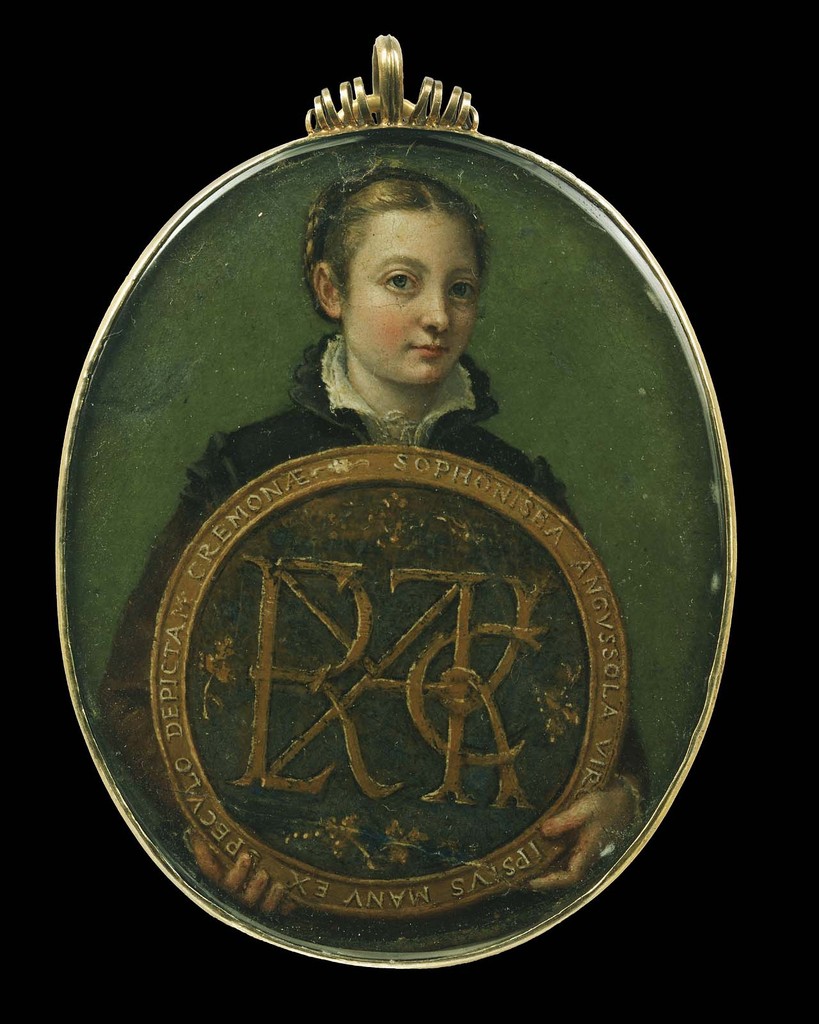
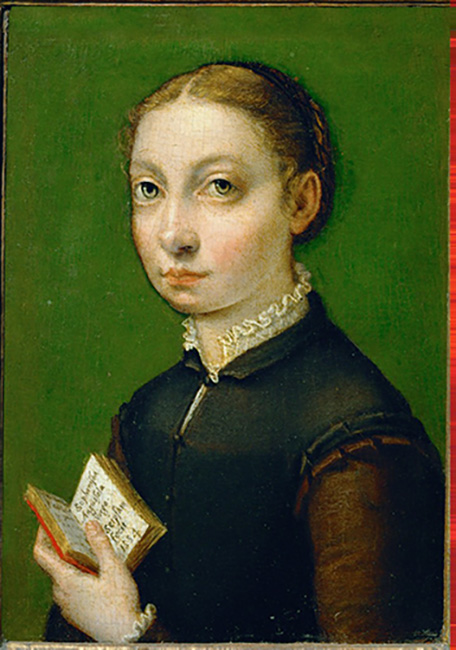
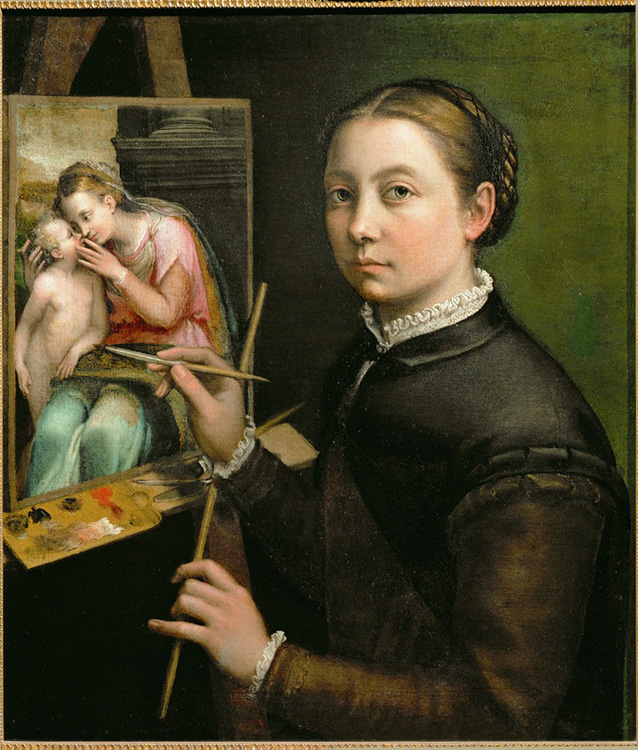
We have a letter from the artist’s father dated 7 May 1557 thanking the great Italian Renaissance painter, sculptor, and architect, Michelangelo, for the “honourable and thoughtful affection that you have shown to Sofonisba, my daughter, to whom you introduced to practice the most honourable art of painting.”2
While it is clear from this note that Sofonisba met the famous Renaissance artist, it has also been suggested that she may have even studied with Michelangelo. Certainly the renown she gained in Italy helped to secure her position as lady-in-waiting at the Spanish court. Sofonisba’s international renown grew throughout her lifetime. Later in her life, the great Baroque painter Anthony van Dyck visited her in Sicily and painted her portrait.
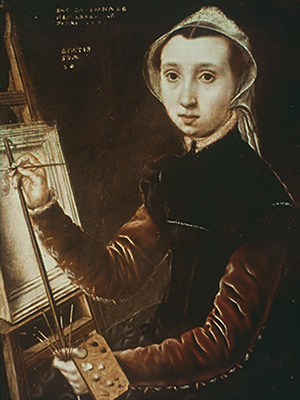
Centuries later, with the feminist movement of the 1970s, Sofonisba’s fame and significance have been once again “rediscovered” and she is now counted among ranks of other important painters of the early modern period, a revival of interest similar to that accorded to artists such as Artemisia Genitleschi.
Self-Portrait, 1556
In the 1556 self-portrait, Sofonisba shows herself in the act of painting, applying mixed pigments to a canvas that depicts the Virgin and Christ Child tenderly kissing. She gazes outward—as if we have just interrupted her in mid-stroke. Her expression is calm and reserved. A maulstick (a common device used to support the artist’s hand) held in her left hand supports her right hand as she touches the brush to the canvas.
The artist wears a simple black dress—possibly to connote modesty and virtue. Some of Sofonisba’s other self-portraits, such as one where she holds a small book, even include inscriptions like “Sophonisba Angusola virgo seipsam fecit 1554” (The virgin Sofonisba Anguissola made this herself in 1554) to identify herself as a chaste, virtuous woman (above).
Displaying herself in the act of painting associated her with an established tradition of artists depicting themselves—not all of them men. While contemporaneous artists like Titian and Albrecht Dürer painted self-portraits, those that included a painter’s tools of the trade—a canvas, palette, and maulstick—were less common. Examples do exist, however, from the sixteenth century, and artists showing themselves with their tools became increasingly popular over time. Like Sofonisba, Caterina van Hemessen fashions herself at a canvas, holding a maulstick while she paints.
Other Portraits
Beyond painting self-portraits, Sofonisba also produced miniatures and group portraits. Many of those completed before her departure for Spain, such as The Chess Game (above), exhibit members of her family. Sofonisba would not have had access to male models, and drew inspiration from those people she encountered in her daily life like her family.
This painting shows the artist’s three sisters (Lucia, Europa, and Minerva) playing chess—an intellectual pursuit—with their governess looking over them. Sofonisba shows an intimate setting with her sisters. The sister to the left, thought to be Lucia, looks out at the viewer after winning the game.
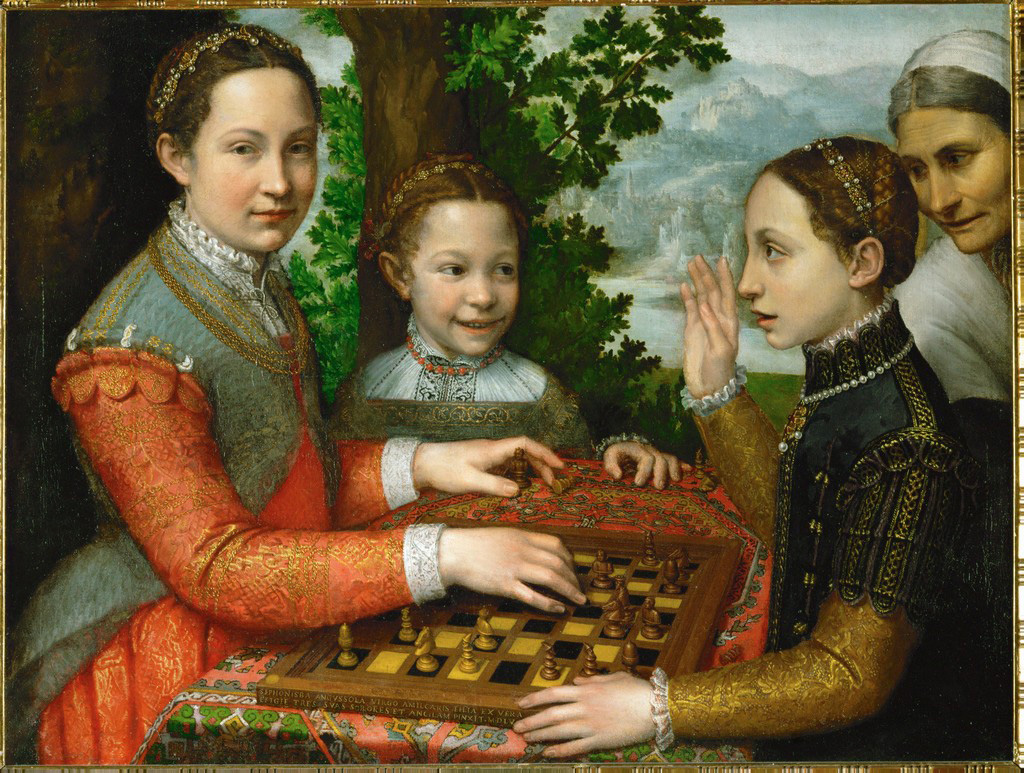
Sofonisba displays her virtuosity as a painter here by positioning her figures in a variety of poses. Their gazes also lead our eye around the canvas and eventually back to the artist herself, who occupies the position outside of the canvas. Sofonisba also demonstrates her skill by painting a variety of textures in her sisters’ clothes and the imported carpet under the chessboard.
Sofonisba continued painting portraits throughout her life, including self-portraits of her in advanced age. One, dated to 1610 (left, when the artist was 78) shows the artist seated on a chair, holding a book and a piece of paper. Her dress is not altogether different from the outfit in her 1556 painting: black, modest, and reserved. Upon her death at age 93 (in 1625), her second husband, Orazio Lomellino, had her tomb inscribed, “To Sofonisba, my wife, who is recorded among the illustrious women of the world, outstanding in portraying the images of man.”
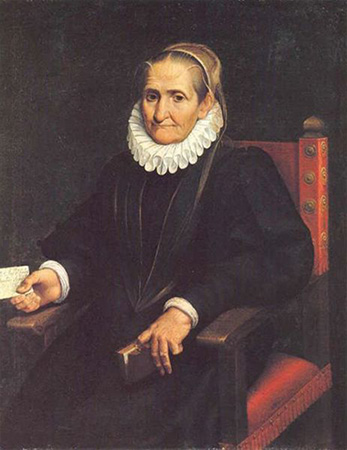
Media Attributions
- Figure 1. Parmigianino, Madonna with the Long Neck, 1534-40. (Galleria degli Uffizi; Image source: User “Mari-mas-su”/Wikimedia Commons) is licensed under a Public Domain license
- Figure 2. Sofonisba Anguissola, Self-Portrait, c. 1556, varnished watercolor on parchment. The medallion is inscribed in Latin: “The maiden Sofonisba Anguissola, depicted by her own hand, from a mirror, at Cremona” (Image source: Museum of Fine Arts, Boston via Artstor. Used with permission, for education use only)
- Figure 3. Sofonisba Anguissola, Self Portrait, 1554, oil on wood (Image source: Erich Lessing Culture and Fine Arts Archives/ART RESOURCE, N.Y. via Artstor. Used with permission, for education use only)
- Figure 4. Sofonisba Anguissola, Self Portrait Painting the Madonna, 1556, oil on canvas (Image source: Muzeum Zamek w Lancucie, Lancut, Poland via Artstor. Used with permission, for education use only)
- Figure 5. Catharina van Hemessen, Self Portrait at the Easel, 1548, oil on panel (Öffentliche Kunstsammlung Basel; Image source: University of California, San Diego via Artstor. Used with permission, for education use only)
- Figure 6. Sofonisba Anguissola, Game of Chess with Portraits of the Painter’s Three Sisters and a Servant, 1555, oil on canvas. Muzeum Narodowe, Poznan, Poland (Image source: Muzeum Narodowe, Poznan, Poland Erich Lessing Culture and Fine Arts Archives/ART RESOURCE, N.Y. via Artstor Used with permission, for education use only)
- Figure 7. Sofonisba Anguissola, Self-Portrait, c. 1610 (Image source: Gottfried Keller Collection, Bern via Smarthistory) is licensed under a CC BY-NC-SA (Attribution NonCommercial ShareAlike) license
Candela Citations
- Sofonisba Anguissola. Authored by: Dr. Lauren Kilroy-Ewbank. Provided by: Smarthistory. Retrieved from: https://smarthistory.org/sofonisba-anguissola/. License: CC BY-NC-SA: Attribution-NonCommercial-ShareAlike
- Mannerism. Provided by: National Gallery of Art. Retrieved from: https://www.nga.gov/. License: Public Domain: No Known Copyright

